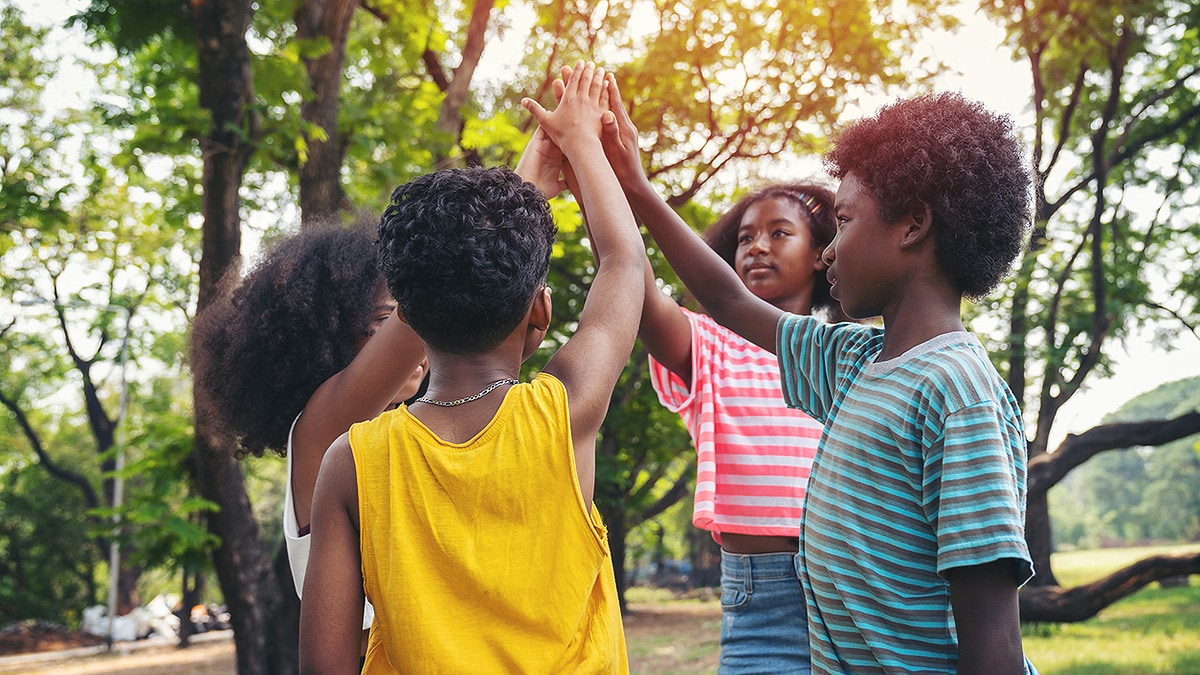Key points
- CDC works with partner organizations to improve health and well-being through community social connectedness.
- This is part of CDC's commitment to achieve health equity in the United States.
- Several CDC social connection programs are highlighted below.

Tribal Practices for Wellness in Indian Country
CDC's Healthy Tribes program is working with 36 tribal organizations to strengthen connections to community, family, and culture to promote health.
As part of Tribal Practices for Wellness in Indian Country (TPWIC), they aim to increase:
- Cultural connectedness.
- Social connectedness.
- Eating of healthy traditional foods.
- Physical activity in communities.
Organization funded through TPWIC include:
- American Indian Tribes.
- Alaska Native villages.
- Tribal organizations that work with tribes.
- Urban Indian organizations
Book collection for tribal youth
The Star Collection is a collection of books for American Indian and Alaska Native readers in kindergarten through third grade.
The two-book collection:
- Celebrates connections to culture and community.
- Encourages positive, safe, nurturing, and stable relationships.
Building Resilient Inclusive Communities
The Building Resilient Inclusive Communities (BRIC) program has supported 20 state health departments to promote healthy living and reduce social isolation.
With BRIC funding, states have worked to:
- Improve social connectedness in communities.
- Improve safe access to physical activity.
- Promote healthy eating through improved nutrition security.
BRIC is implemented through the National Association of Chronic Disease Directors.
School connectedness

Increasing school connectedness, belongingness, and engagement within the school community can help students' health and well-being.
School connectedness resources
- Strategies to create a healthy and supportive school environment.
- Toolkit for Schools: Engaging Parents to Support Student Mental Health and Emotional Well-being
- What Works in Schools: Safe, Supportive School Environments.
Strengthening social connections to prevent suicide
Promoting healthy connections is a key strategy in CDC's suicide prevention efforts.
This strategy and others are detailed in the Suicide Prevention Resource for Action.
It prioritizes the most impactful suicide prevention activities for states and communities.
The Resource details how connections may protect against suicidal behaviors by:
- Decreasing isolation.
- Encouraging healthy coping behaviors.
- Increasing
- Sense of belonging.
- Personal value and worth.
- Resilience.
- Sense of belonging.
How Right Now promotes resilience
CDC's How Right Now campaign was designed to strengthen the emotional well-being and resilience of communities experiencing mental health challenges.
Socially connecting through conversations is one of the key coping tools promoted through the campaign.
Walk with Ease
Studies show that walking and fitness programs may lead to enhanced social connection.12
The CDC-recognized Walk with Ease program is one such example. It combines self-paced walks with groups of people for discussions on health topics. Participants meet in-person three times a week for 6 weeks.
This program was developed for people with arthritis and older adults.
CDC funds partner organizations to make Walk with Ease available in communities. It is also available as a self-directed program and through remote delivery.
- Brady S, L A D'Ambrosio, A Felts, EY Rula, K P Kell, J F Coughlin. Reducing isolation and loneliness through membership in a fitness program for older adults: Implications for health. Journal of Applied Gerontology. 2020;39(3):301–310.
- Walters K, Marshall M, Wilkinson AN, Natividad MD. An intentionally designed walking program for seniors results in enhanced community connection. J Aging Phys Act. 2022;30(1):44-53.
